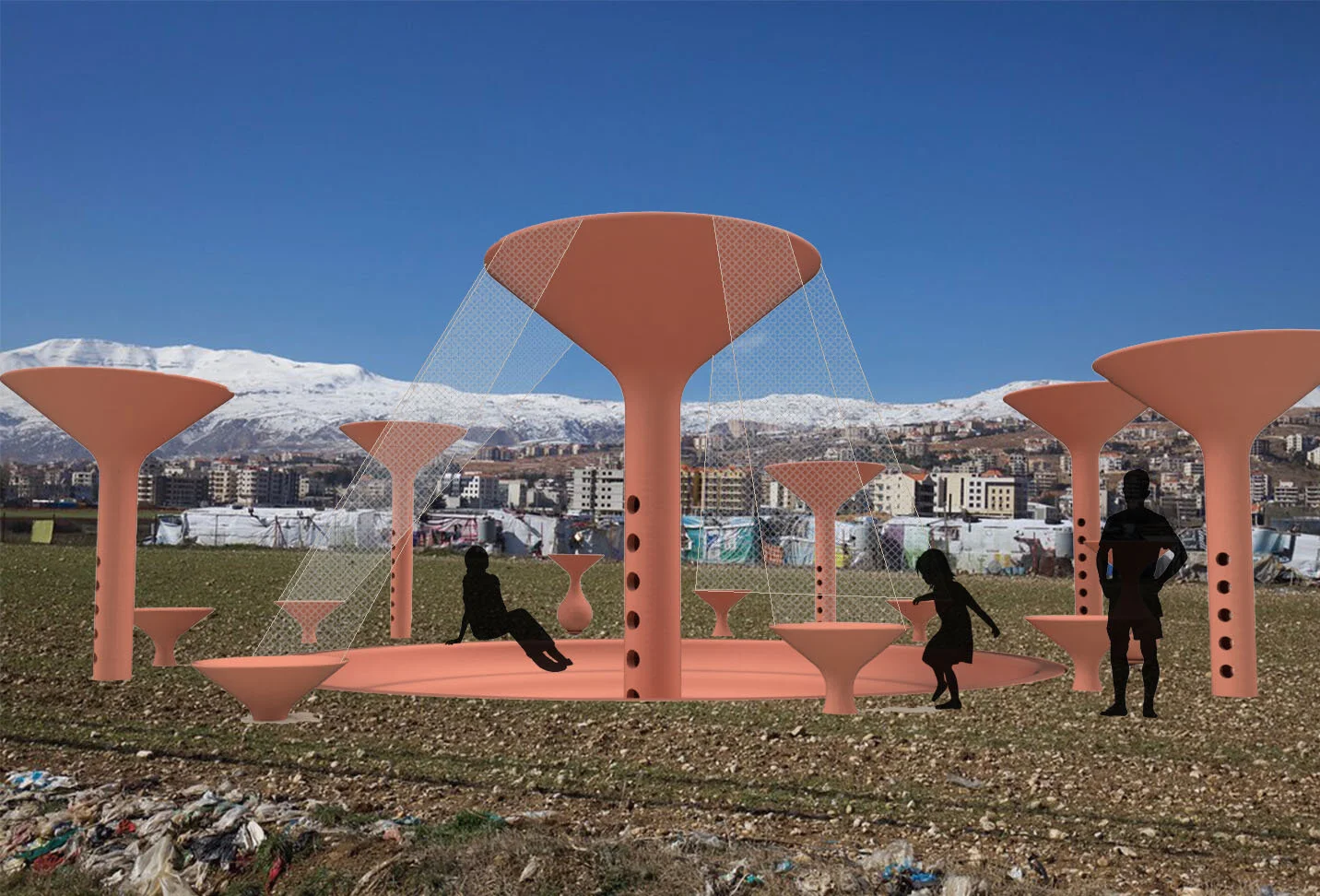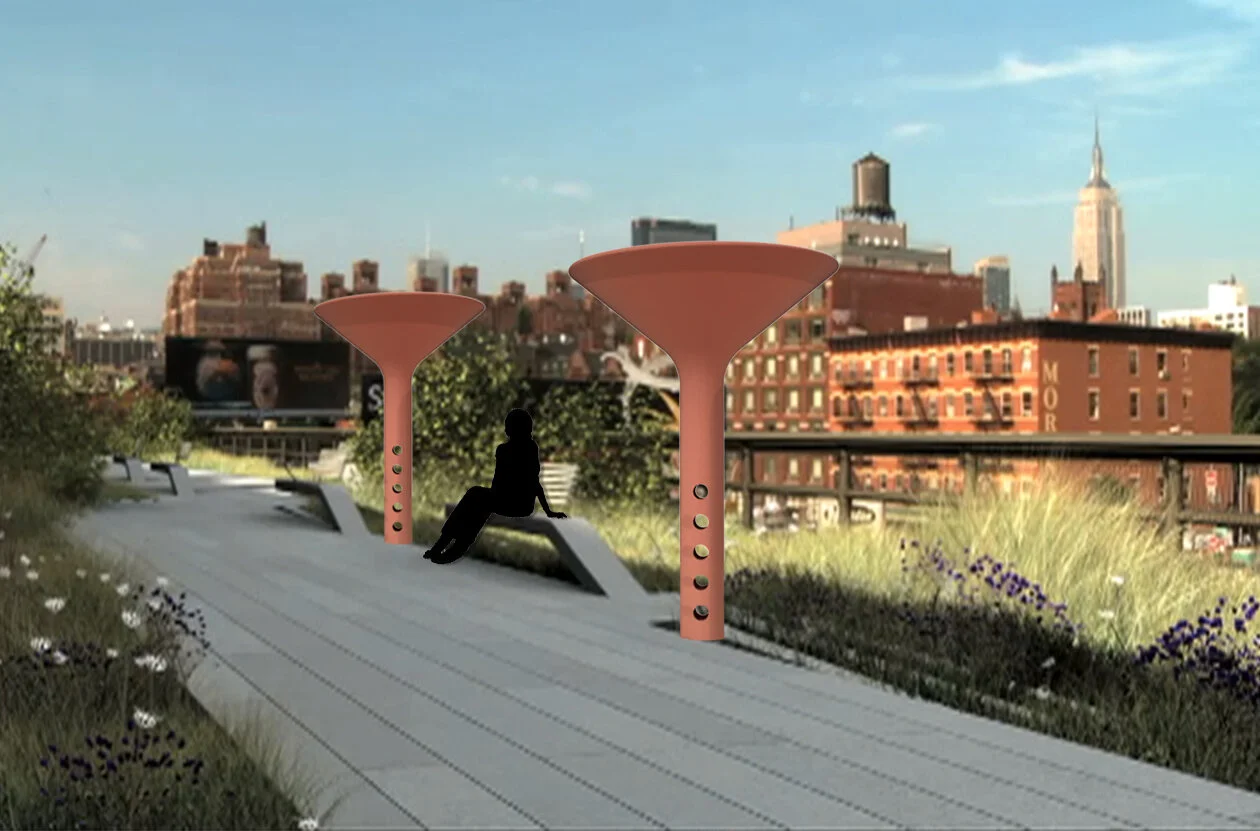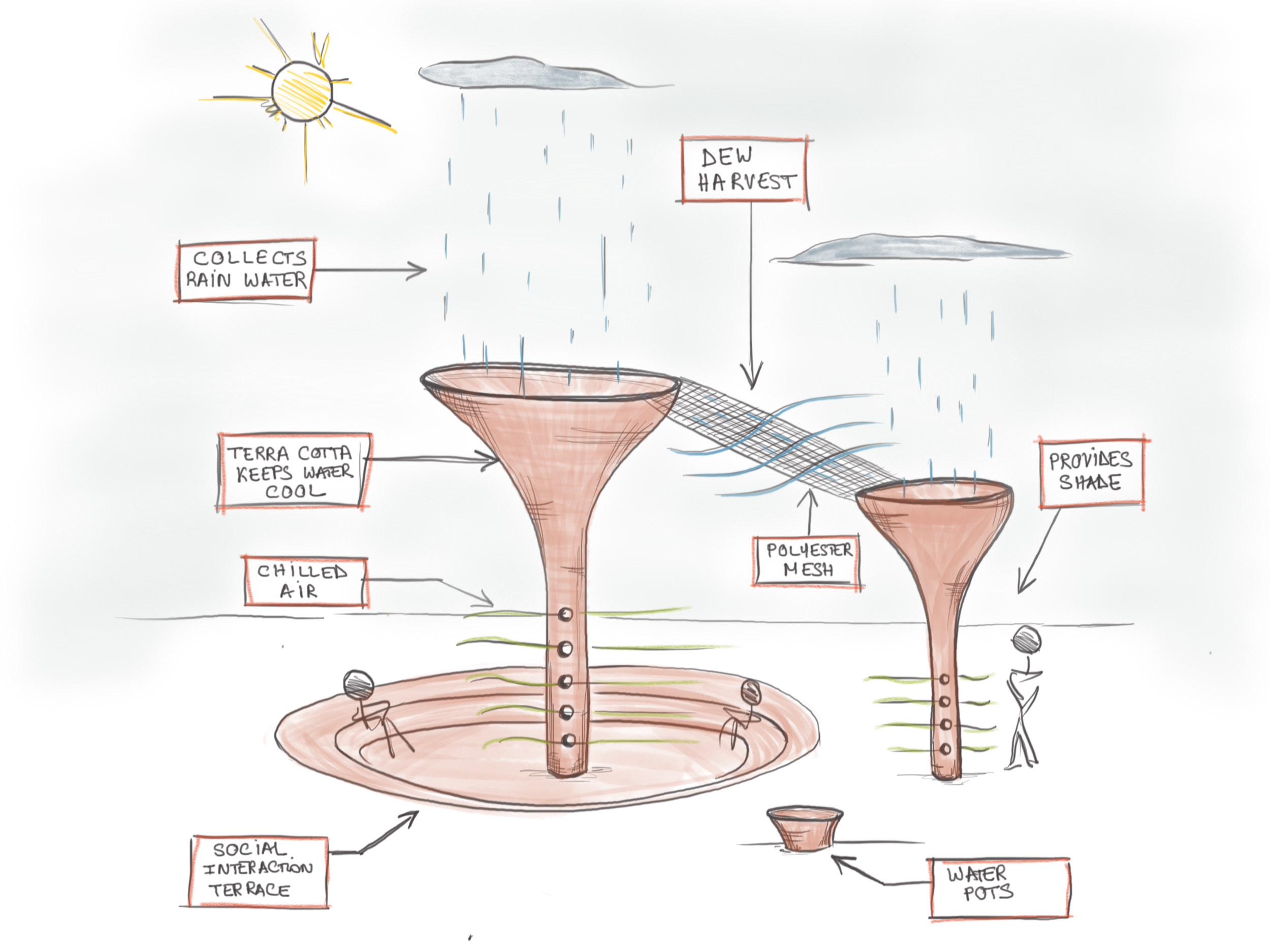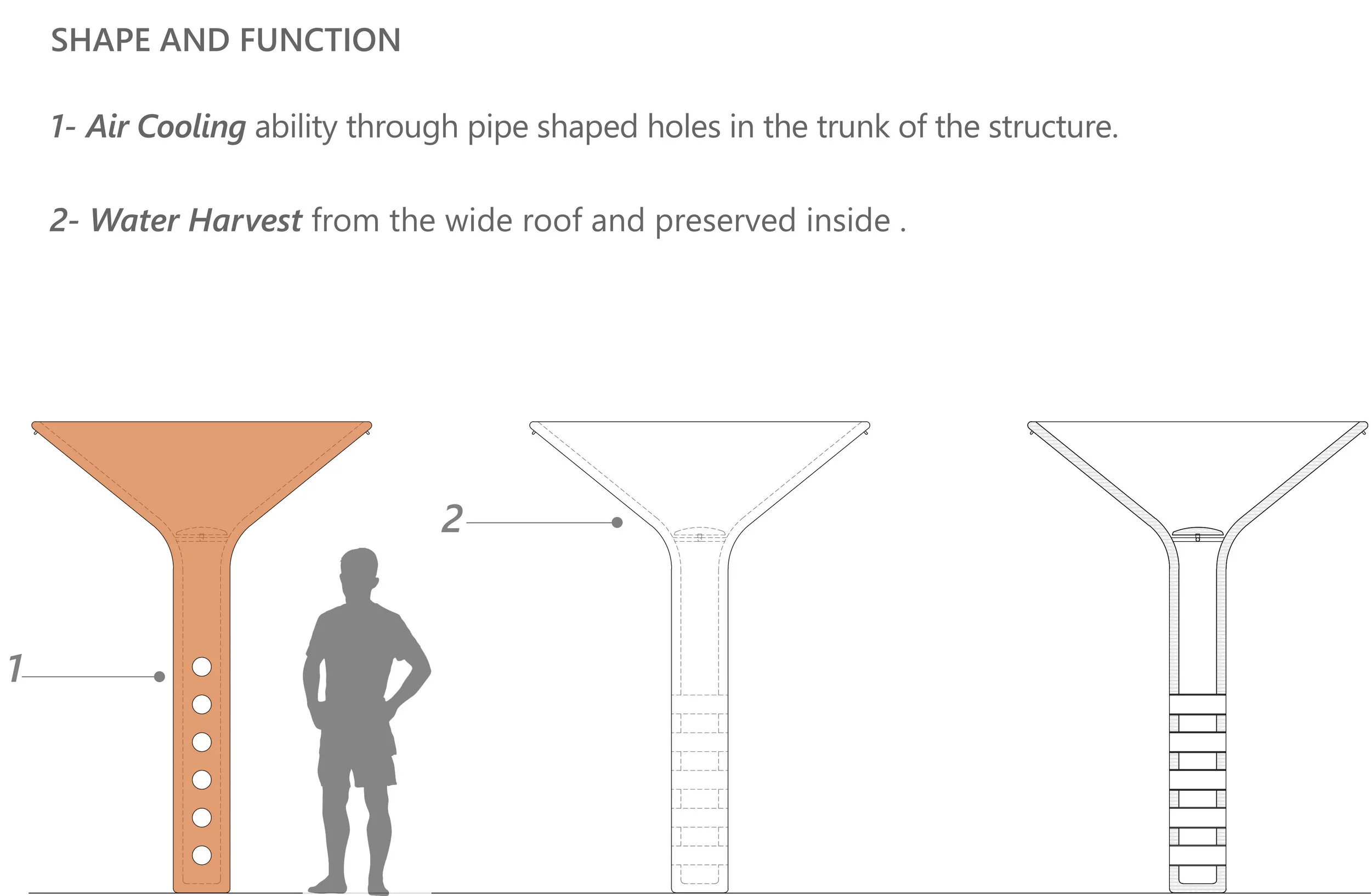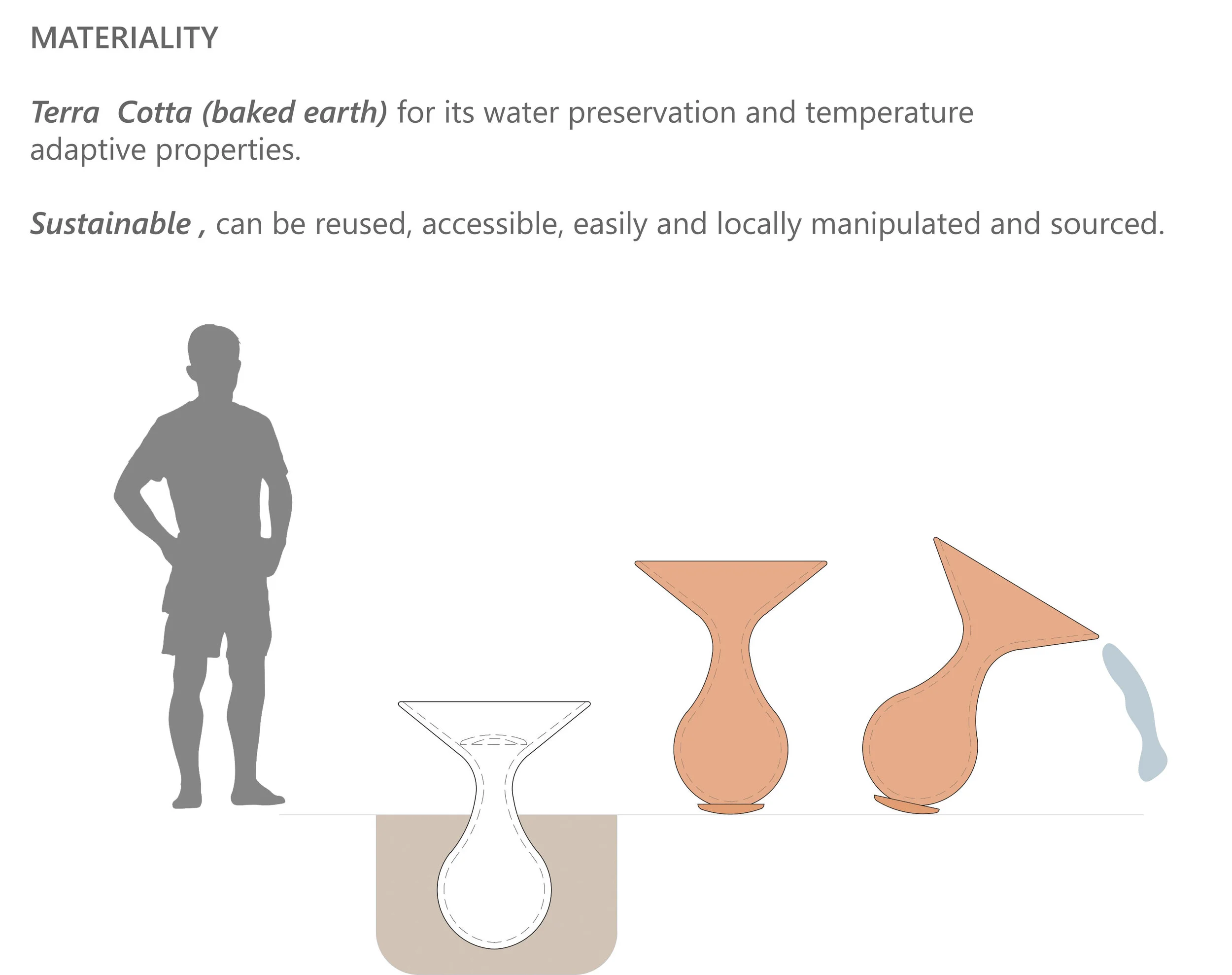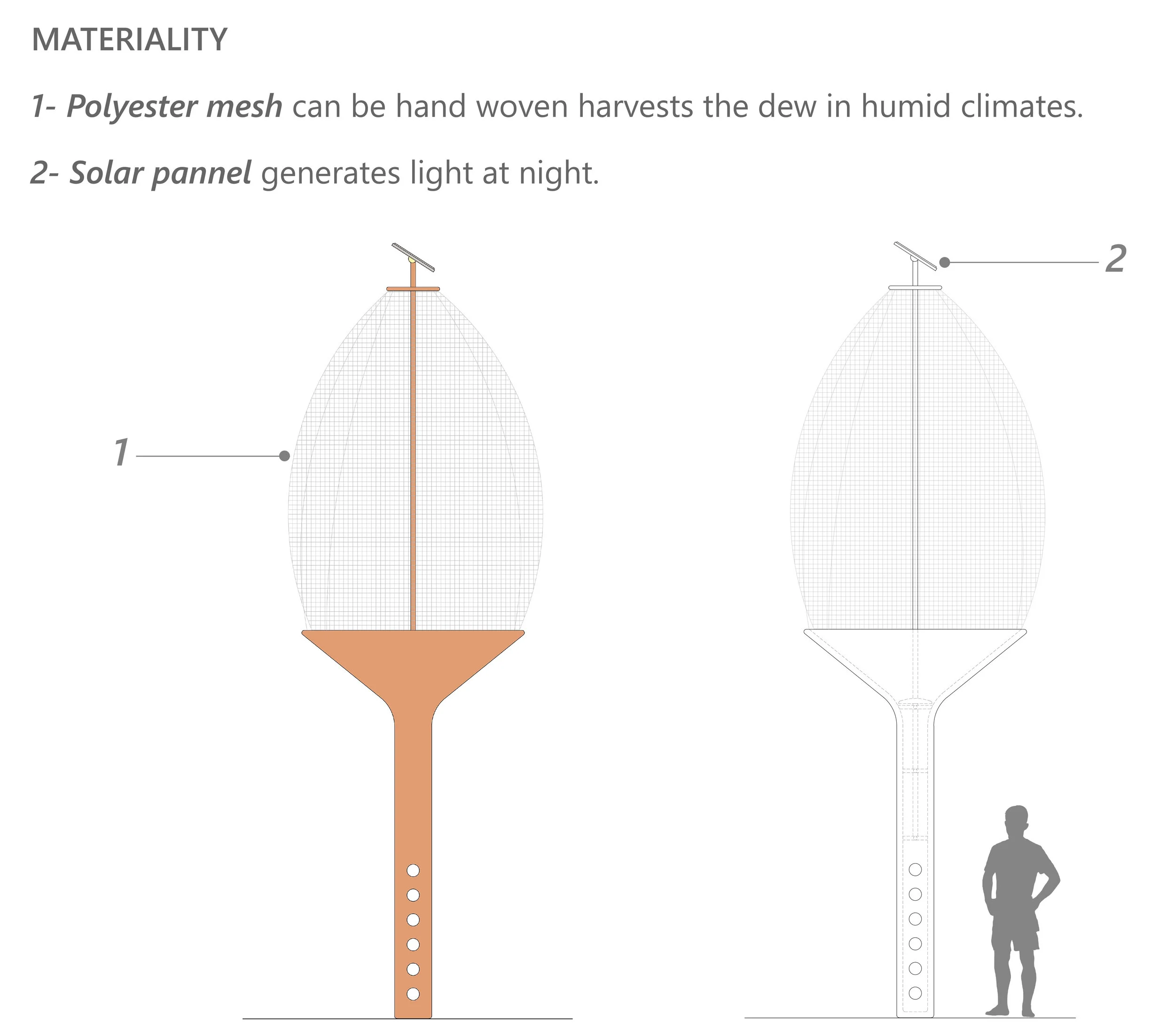
Common Grounds
Project Type : Student Work - 2019
Foucault describes the crisis heterotopia as "reserved for individuals who are, in relation to society and to the human environment in which they live, in a state of crisis."
We are witnessing an increasing amount of communities living in a Crisis Heterotopia. Around the world, people are detached from their roots due to political, environmental, or social conflicts. They are living between permanent and temporary conditions, which prevents them from overcoming this fracture. As human beings, our greatest tool is the unity of the people.
How might we promote social integration of displaced communities through design? What do we have in common?
-Our environment, the ground we live on, and the way its parameters affects us.
Aligned with the United Nations Sustainable Development Goal 11 “Sustainable Cities and Communities”, I designed the Common Ground Project to enhance social capital and value of the community while respecting the environment.
Common Grounds is an initiative to build an accessible public space for and by communities sharing the same grounds. The first step towards having a functioning relationship with the host community would be to create a neutral platform for communication. I aimed to offer a paradigm of concrete circumstances necessary to generate interaction and conversation over the simple pleasure of having shade and cool air on a warm day. By building this project collectively, we incite people to create an inclusive space that benefits everyone.
Inspired by seasonal environmental elements, Common Grounds is a combination of Terra Cotta volumes, ranging in scale, following conic shapes for water collection, to serve different purposes, from air-cooling to rain shelter.
Three typologies where designed adapting to urban and rural landscapes. The design inspiration emerged from the memory of sitting under a tree to share stories; commonly present in traditional Lebanese novels. The honest shapes are made to adapt to low-tech manufacturing and from locally accessible material and tools.


